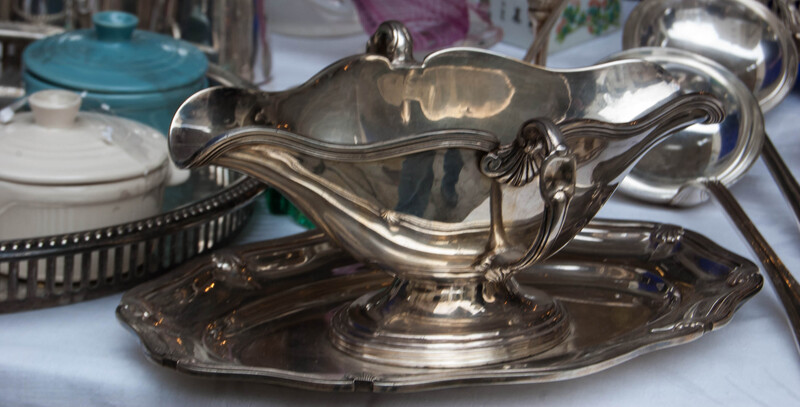A Beginner's Guide to Disposing of Pots and Pans Sustainably
Have you ever wondered what to do with your old, battered pots and pans? When cookware reaches the end of its lifespan, tossing it in the trash may seem like the easiest answer. However, disposing of pots and pans sustainably is crucial for reducing waste and benefiting our environment. This comprehensive guide for beginners will walk you through responsible, eco-friendly ways to get rid of old cookware, whether it's aluminum, stainless steel, nonstick, cast iron, or copper.
Why Sustainable Disposal of Cookware Matters
Every year, millions of pots and pans end up in landfills, where they can take hundreds of years to decompose. The materials in your cookware -- metal, plastic, ceramic coatings, and more -- can harm local ecosystems and waste valuable resources. By learning about sustainable cookware disposal, you're making a small but meaningful step towards a greener planet.
- Reduces landfill waste
- Recovers valuable materials
- Prevents leaching of chemicals into soil and water
- Encourages conscious consumer choices
If you're ready to give your old pots and pans a new lease on life, read on for all the details you need.

Understanding What Your Pots and Pans Are Made Of
Before choosing the best eco-friendly disposal method, you'll need to identify the primary material of your cookware. This will determine whether it can be recycled, donated, or upcycled. Here are some common types:
- Stainless Steel: Durable, recyclable, but often with plastic handles.
- Aluminum: Lightweight and usually recyclable, especially if uncoated.
- Cast Iron: Heavy-duty, usually accepted at metal scrap yards.
- Copper: Valued metal, often with tin or aluminum linings.
- Nonstick: Often coated with PTFE or Teflon; trickier to recycle.
- Ceramic or Enamel: May not be recyclable in every facility, but sometimes reusable or upcyclable.
Check the bottom of your pan or manufacturer's information for details. Handles and other materials might need to be removed in some recycling programs.
When Should You Dispose of Cookware?
Not all worn cookware needs to be thrown away. Sometimes, a good scrub or seasoning can restore function, especially for cast iron pans. However, you should consider eco-friendly cookware disposal in these cases:
- Nonstick coating is peeling or scratched
- Warped, cracked, or dented pans that no longer have a flat surface
- Rusted pans beyond repair
- Bare metal is exposed and causing food safety concerns
- Handles are loose or broken and cannot be fixed
Top Sustainable Ways to Dispose of Pots and Pans
1. Donate Usable Cookware
If your pans are still safe and functional, donation is a wonderful way to keep them out of the waste stream and help others in need.
- Local thrift shops like Goodwill or Salvation Army
- Homeless shelters and soup kitchens
- Community centers and churches
- Colleges and student housing programs
- Online platforms (Facebook Marketplace, Freecycle, Craigslist's free section)
Pro Tip: Clean the cookware thoroughly before donating. Include lids if available and make sure handles are tight.
2. Recycle Your Old Pots and Pans
Can pots and pans be recycled? The answer varies by location and material type:
- Metal scrap yards: Most accept stainless steel, cast iron, aluminum, and copper pans. Remove non-metal parts when possible.
- Municipal recycling centers: Some accept cookware, but check guidelines - many don't take coated or nonstick items due to PTFE/Teflon.
- Retail take-back programs: Certain cookware brands (like Calphalon, GreenPan, and Made In) offer mail-in or in-store recycling of their products. Some home goods stores may also collect cookware for recycling.
Important: Never put pots and pans in regular curbside recycling unless your city specifically allows it. The large, rigid shapes and mixed materials can damage recycling machinery or contaminate batches.
3. Repurpose or Upcycle Cookware Around the Home
Even if a pan is no longer useful for cooking, it might have a second life as something else! Upcycling is a sustainable and creative method of cookware disposal.
- Planters for herbs or flowers
- Garden tool holders or caddies
- Birdbaths or bird feeders
- Wall art (paint or decorate)
- Organizers for tools, craft supplies, or toys
- Serving trays (cast iron or enameled pieces)
Let your DIY creativity shine -- just make sure to smooth sharp edges and remove lingering food residues!
4. Sell Old Cookware for Scrap
Metal pots and pans have real value as scrap and certain metals (like copper or aluminum) fetch a decent price. Remove non-metal parts as needed. Check prices with your local scrap yard or metal recycler.
- Cast iron and stainless steel - usually accepted by bulk weight.
- Copper cookware - strip any non-copper coatings for better prices.
- Aluminum pans - especially if uncoated or stripped of non-aluminum parts.
Recycling cookware as scrap not only keeps it out of landfills but also helps meet demand for recycled metals, reducing the need for new mining.
5. Participating in Manufacturer Take-Back Programs
Some cookware brands lead the way in sustainable cookware disposal by offering dedicated take-back and recycling programs:
- Calphalon: Mail-in program for old cookware (not limited to their own brand).
- GreenPan: "Cookware Recycling Program" allows you to send back any brand of pan.
- Caraway: Offers pre-addressed shipping for recycling old Caraway pans.
- Made In: Offers incentives for sending back your old stainless steel or nonstick pans.
Check the brand's website for details and requirements, as some programs are limited to their own products.
How to Prepare Pots and Pans for Sustainable Disposal
Whether you're giving away, recycling, or upcycling, properly preparing your cookware is important.
- Wash the pans thoroughly -- remove all grease and food residue.
- Disassemble: Remove plastic or silicone handles, lids with glass, and other non-metal parts if recycling as metal.
- If nonstick, check guidelines -- most facilities do not accept Teflon or PTFE coatings.
- For donation, keep lids together and tighten loose handles.
- Label the box or bag as "Cookware" to prevent confusion at collection sites.
Common Questions About Sustainable Cookware Disposal
Can you recycle nonstick pans?
Most curbside recycling does not accept nonstick coatings due to chemicals. Some metal scrap yards will accept them if you remove as much of the coating as possible. Check for manufacturer take-back or special recycling events in your area!
Where can I recycle cookware near me?
Use online tools like Earth911, Call2Recycle, or your city's recycling website to find local scrap metal buyers, collection events, or recycling centers that accept cookware. Home improvement stores sometimes also host take-back drives.
Should I throw away rusty pans?
Light rust on cast iron can usually be scrubbed away. Severely rusted or pitted cookware, especially if unsafe for food, should be recycled or upcycled rather than thrown away.
Can glass lids or ceramic pans be recycled?
Cookware glass is often "tempered" and can't go into normal glass recycling. Ceramic and stoneware are usually not accepted except at specialty recycling centers or creative reuse programs.
Creative Ways to Reuse Old Pots and Pans
If you love DIY projects, some of the most eco-friendly solutions for old pots and pans involve turning them into something useful or beautiful:
- Stepping stones: Fill with concrete, unmold, and use in your garden path.
- Hanging planters: Attach ropes to handles and display on your porch.
- Novelty wall clocks: Transform an old skillet into a fun, upcycled kitchen clock.
- Serving trays or centerpieces: Paint and seal for food-safe serving, or add decorations for table art.
- Outdoor fire pit tools: Old cast iron pans work great for campfire cooking!
With a little imagination, your old cookware can have years of new purpose.
What to Avoid When Disposing of Pots and Pans
Never toss cookware into general waste unless you have no alternative. Try to avoid:
- Putting pots and pans in regular plastic/glass recycling bins (they won't be processed correctly)
- Burning cookware, which releases toxins (especially with nonstick coatings)
- Dumping in the environment or curbside as "bulky trash"
- Giving away items that are unsafe, such as those with loose handles or flaking nonstick coatings

Tips for Buying Sustainable Cookware in the Future
The best way to solve the cookware disposal problem is to buy smart from the start. Consider these strategies:
- Choose longer-lasting materials like stainless steel, cast iron, or uncoated copper or aluminum.
- Buy fewer, higher-quality pans instead of disposable ones.
- Pick brands that offer take-back or recycling programs.
- Look for modular, repairable designs with replaceable handles or parts.
- Avoid hazardous coatings like PFAS and opt for ceramic or seasoned cast iron when possible.
Taking these steps means your next set of pots and pans will last longer, perform better, and be easier to dispose of sustainably when their day comes.
Conclusion: Every Pan Has a Green Goodbye
Disposing of pots and pans sustainably does not have to be complicated. Whether you choose to donate, recycle, upcycle, or sell for scrap, you're keeping useful materials out of landfill and supporting a circular economy. *The next time you see a worn-out skillet or battered saucepan, remember: every pan has a purpose -- even after it leaves your kitchen!*
Share these tips with friends and family, and together, let's make cookware disposal as eco-friendly as the meals we prepare in them.